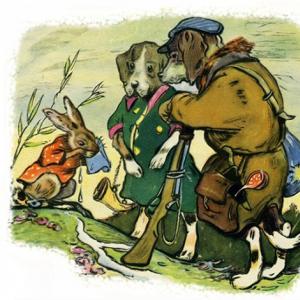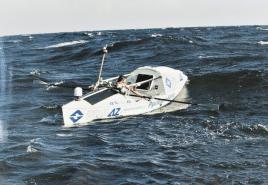Vocational school 7. GBpou in "Voronezh industrial college"
History reference
1947 By order of the Voronezh Regional Department of Labor Reserves, a vocational school No. 12 (RU No. 12) was organized
Sergey Skogorev was appointed the first director of the school.
Since 1952, Georgy Borisovich Afanasyev became the director of the school
1963 RU # 12 was renamed into the city vocational school # 7 (GPTU # 7).
1970 GPTU №7 moved to a new educational building on the street. Cosmonauts, 23
Since 1973 Barmin Vladimir Ivanovich has been appointed the director of the school.
1975 GPTU №7 was transformed into the city secondary vocational school № 7 (SGPTU №7).
1984 SGPTU No. 7 was reorganized into a secondary vocational school No. 7 (SPTU No. 7).
1991 SPTU No. 7 was reorganized into Vocational School No. 7 (PTU No. 7)
1992 Vocational school No. 7 was reorganized into a higher vocational school (vocational lyceum No. 7) (VPU No. 7).
1996 VPU No. 7 was reorganized into a vocational lyceum No. 7 (VL No. 7)
2002 Substation # 7 was renamed into State educational institution initial vocational education "Professional Lyceum No. 7 of Voronezh" (GOU NPO "PL No. 7 of Voronezh").
Since 2003, Tatyana Anatolyevna Salkova has been appointed director of the lyceum
2005 GOU NPO "PL No. 7 of Voronezh" was renamed into Regional State Educational Institution of Primary Professional Education "Vocational Lyceum No. 7 of Voronezh" (OGOU NPO "PL No. 7 of Voronezh").
2007 OGOU NPO "PL No. 7 of Voronezh" was merged with OGOU NPO "Vocational School No. 14 of Voronezh".
Since 1947, on the basis of the Lyceum, more than 20,000 highly qualified workers have been trained in the professions of an electric and gas welder, a plumber, a fitter, an installer of technological equipment, a computer operator, an assistant secretary, an assembler of microcircuits, a welder, an auto mechanic, an operator of lifting and transport and construction machines , installer of sanitary, ventilation systems and equipment.
2012 OGOU NPO "PL No. 7 of Voronezh" was renamed into GOBU NPO VO "PL.No. 7 of Voronezh"1917 changed the whole life of people. Started civil War... The territory of the Simsk settlement was occupied by the Kolchakites. 1921 - hunger and cold, so the Simskoe Higher Primary School in the period from 1920 to 1922 did not work. Renamed into a school of factory apprenticeship (FZU), it was opened on March 8, 1923 on the initiative of the former Simskogorny Okrono, Zlatoust Okrono, headed by the Simsk plant management, party, trade union and Komsomol organizations. When the FZU school was opened, it had two departments: metalwork and turning and carpentry. Students were admitted at least 15 years old, with theoretical training not lower than the 1st stage (four years old), physically developed and healthy. From the day of the opening of the FZU school and the academic year 1932-1933, the term of study was three years. From the 1933-1934 academic year, in accordance with the reform on the terms of study in schools of FZU, (order of August 16, 1933) of the People's Commissar of Heavy Industry Ordzhonikidze, the school switched to a one-year term of study. From October 1, 1936, the school had a 1.5 year term of study.
The number of students by year of study was as follows:
(Appendix # 5)
Information about the opening of branches
In 1924-1925 academic year the foundry department was opened, which existed until the 1933-1934 academic year.
In the 1927-1928 academic year, a blacksmith department was opened, which existed until the 1934-1935 academic year
In the 1933-1934 academic year, a turning (for metal) department was opened, which also functioned in a 1.5 year period of study, i.e. in the 1936-1937-1938 academic year.
In the 1934-1935 academic year, two departments were opened: model (instead of carpentry) and electrical, which existed during a one-year course of study.
In 1936, from October, a molding department was opened, which functioned with a 1.5 year course of study in the 1936-1937-1938 academic year.
During the years of study from 1923 to 1938, the FZU school graduated 664 people by profession: locksmith, carpenter, molding caster, blacksmiths, electrician, turner (Appendix No. 6,7,8)
The school was headed by Vladimir Timofeevich Shilov from 1915 to 1930
(Appendix No. 9), and from February 17, 1931 to 1940, Georgy N. Morin worked as the director (Appendix No. 10)
For the planned training of workers, by the Decree of the Presidium of the Supreme Soviet of the USSR of October 2, 1940, the State system of organized training of workers - Labor Reserves was created and new types educational institutions, therefore, the Simskaya FZU school was reorganized into a factory training school (FZO №15), which was located in a 2-storey building of the FZU school. The state took over the maintenance of the students. The state was introduced to provide students with uniforms and food. The contingent of students was 240 people, and Alexander Vasilyevich Buslaev was appointed director. (Appendix # 11) The students studied for six months. The groups were composed of students with 4-5 grade education. Eight groups were recruited. The first graduation took place on May 24, 1941 in the amount of 236 people, of which
30 people graduated from the school with honorable mentions. Such a certificate was issued to a student of FZO No. 15, a graduate of 1942 Sokolov Gennady Vasilyevich, who currently works as the head of the city museum. (Appendix No. 12)
The second set was organized, but the Great Patriotic WarTherefore, the Simskaya school of FZO №15 restructured its work. All activities teaching staff was aimed at the accelerated training of young specialists who replaced at the city's enterprises those who had gone to the frontline. There were no theoretical studies, after the practice the guys were engaged in military training for a 110-hour program: they studied small arms, the device of grenades. It was cold and hungry, but the guys complained, helped the front by harvesting potatoes, in the workshops they made locksmith tools, stools, and shovel cuttings. Students ate three times on special cards. Khlebadavalin breakfast - 200 grams, lunch - 250 grams, dinner - 250 grams. School FZO No. 15 had a lathe (6 lathes), a carpentry (20 workbenches), a blacksmith's (7 forges) workshops and an electric workshop. The last admission to the school FZO No. 15 was made in January 1943, and the graduation took place in July 1943.
On the basis of the order of the Chelyabinsk Department of Labor Reserves No. 270 of 12.07.1943, the FZO school No. 15 was reorganized into a vocational school No. 22 (RU No. 22) with a period of study of 2 years. The first set on the basis of 7-grade training was carried out in July 1943 in the amount of 375 people. Along with special subjects, they studied Russian, mathematics, chemistry, history, military affairs, physical education. Study rooms were located on the second floor, and master's on the first. During the war years, the school graduated 922 people. During the war period, the school worked staff members of the Great Patriotic War: Korobeinikov Nikolai Grigorievich (Appendix No. 13), Napalkov Leonid Ivanovich (Appendix No. 14), Zhukov Nikolai Mikhailovich (Appendix No. 15)
In the post-war period, there was a further transformation, in the workshops of the school they installed lathes, in the locksmith's workshop they equipped 26 workplaces with a set of tools, a planer, began to make new products: jacks, hammers with a round hammer.
The period from 1960 to 1980 was marked by new transformations. On the basis of the order of the Regional Directorate of Vocational Technical Education No. 92 dated 04/20/1962 Crafts School No. 22 was transformed into GPTU No. 7 (City Vocational Technical School No. 7), and on the basis of the order of the State Committee of the RSFSR No. 132 dated 04/25/1978. GPTU No. 7 was reorganized into SGPTU No. 7 (city secondary vocational school No. 7). Along with vocational training, students began to receive secondary education. The school had more than 50 units of machine-tool equipment, the library fund was more than 10 thousand copies of books, the annual recruitment of 150 to 200 people. During this period, Ivan Stepanovich Kosmynin worked as the director of the school.
(Appendix No. 16), the construction of a new educational complex has begun.
Further development took place between 1980 and 2000. Based on the order of the State Committee of the RSFSR for professional technical education No. 213 of 04.09.1984GSPTU No. 7 transformed into SPTU No. 7 (secondary vocational school No. 7). In 1984, students began to study in a new educational complex, which consisted of a 4-storey educational building, a 2-storey building - production workshops, a community building with a dining room for 120 seats, sports and assembly halls (Appendix No. 17). On the basis of the order of the Ministry of Public Education of the RSFSR No. 137 of 04/17/1989 Secondary vocational school No. 7 was renamed Vocational-technical school No. 7. During this period, the school was trained according to the programs of 2-year, 3-year training on the basis of basic education and 1-year and 2-year training on the basis of complete secondary education. Students of the school took part in city, cluster sports competitions and regional competitions of professional skills in various. prepared professions., olympiads in general subjects. For good study and work, students were awarded with tourist trips to the cities of our country. Based on the order of the Main Department of Education and Science Chelyabinsk region No. 02-612 of 05.11.1999 Vocational school No. 7 in the city of Sima was renamed into the State educational institution of primary vocational education "Vocational school No. 7 in the city of Sima" For 20 years of this period, 1693 specialists were trained and graduated by profession: turner, electrician repair and maintenance of electrical equipment, fitter-repairman, fitter-toolmaker, cook, pastry chef, machine operator of a wide profile, tractor driver-machinist of a wide profile.
The school has entered the 21st century. From 2001 to the present, an average of 150 people study, the annual graduation is 50-70 people. Training is carried out by profession as a cook, confectioner; a car repair mechanic, an electrician for the repair and maintenance of electrical equipment, a universal turner. Students work in 15 well-equipped classrooms, there is a computer class, the library fund is more than 17,000 copies of educational and fictional literature. There are equipped workshops for all trained professions.
Students are trained by masters of their craft. Pigalova Vera Nikolaevna - master of industrial training in the profession "Chef, confectioner", work experience 25 years, has 1 qualification category, the title "Master of golden hands", awarded the badge "Excellence in professional education Russian Federation", Awarded the diploma of the Ministry of Education of the Russian Federation, Vlasova Tamara Fedorovna - master of industrial training in the profession" Turner ", work experience 27 years, has 1 qualification category, awarded the badge" Excellence in vocational education of the Russian Federation "and the diploma of the Ministry of Education of the Russian Federation", teacher of special subjects in turning business Dryganova Valentina Ivanovna - 40 years of work experience in this school, was awarded with the badge "excellent worker of professional education of the Russian Federation", was awarded a certificate of honor of the Regional Duma of the Chelyabinsk region and the prize of the Governor of the Chelyabinsk region, was awarded a certificate of the Ministry of Education of the Russian Federation
Students take an active part in sports city events, winning annually prize-winning places, in regional competitions of professional skills in prepared professions, in competitions of technical creativity, competitions "Zarnitsa-school of safety", Olympiads in general educational disciplines.
For 108 volunteer school trained and graduated 10704 specialists, most of whom worked and are working at the Simsk State Valve Plant, and now OJSC "Agregat". Some have worked and are still working as heads of departments and departments. Kolmykov Nikolai Konstantinovich worked as the head of the serial design department, a graduate of the FZO school during the war years, awarded the order Labor Red Banner, Order of the Badge of Honor.
Zhukov Pavel Stepanovich - Hero of Socialist Labor, studied at the school from 1952-1954. After graduation, he received a specialty - cabinetmaker, and worked as a milling machine operator at the Simsk Mechanical Plant. For the early fulfillment of the 9th five-year plan in 1976 he was awarded the title of Hero of Socialist Labor. He was awarded the Gold Star and the Order of Lenin.
The head of the school is Viktor Aleksandrovich Sablukov, has 1 qualification category of the head, worked as a master of industrial training, deputy director for educational and industrial work and since 2001 as a director. educational process carried out by the deputy director for educational and production work Viktor Borisovich Konov - head of the highest category, Kalinina Tatyana Mikhailovna - deputy director for theoretical education, head of the 1st category, awarded with a diploma of the Ministry of Education of the Russian Federation.
(Appendix No. 18)
As a result of the research work on the history of the school and the collected material, a room-museum on the history of the vocational school №7 in Sima was opened in the school.
In February 1954, on the basis of plant No. 45 of the military-industrial complex (now FSUE MMPP "Salyut"), a factory school No. 3 (later a vocational school No. 7) was formed, which was located on the territory of the enterprise. FZU was created to provide the enterprise with workers in various professions of metalworking. The first enrollment at the school was about 200 students
Over the more than fifty-year history of the vocational school No. 7, more than 11 thousand skilled workers were trained and graduated in the professions "Turner", "Milling machine operator", "Locksmith", "Machine operator", "Secretary", "Auto mechanic" , "Computer operator" Graduates were sent to FSUE MMPP "Salyut" and industrial enterprises in Moscow. Currently, over a thousand graduates of our educational institution work at FSUE MMPP "Salyut".
A huge contribution to the development of the school and the training of qualified workers was made by engineering and pedagogical workers who devoted most of their lives to work at the school. These are our esteemed veterans:
Sheftel Abram Moiseevich - master and / o (worked from 1954 to 1994);
Gurevich Vladimir Alexandrovich - master and / o (worked from 1974 to 2000);
Borisov Igor Tikhonovich - teacher of special disciplines (worked from 1959 to 2007).
Over the years of the existence of PU No. 7, a huge contribution to the development of the institution has been and continues to be made by FSUE MMPP "Salut" (General Director - Yuri Sergeevich Eliseev). There is a mutually beneficial relationship between the school and the plant. The Salut plant was the base enterprise, and recently became a social partner.
Teachers and their pupils take an active part in the events held by FSUE MMPP "Salyut". Repeatedly, the sports team, made up of students and employees of the PU, performed at the plant championship in various sports, where it won prizes. For many years, the enterprise has provided material assistance to students and employees of the PU. Until 1991, at the expense of the enterprise, an additional payment was made to all students of the school, assistance was provided in strengthening the material and technical base both in the educational building and in training and production workshops. Former graduates of the school work in the management of FSUE MMPP "Salyut": Deputy Chief Engineer Sidorukov Yuri Nikolaevich and Head of Shop No. 39 Katalnikov Gen-nadiy Fedorovich.
Many graduates of VU No. 7 (1979-1988) served in the Soviet Army in the territory of the Democratic Republic of Afghanistan. Among them is Voronin Alexander Ivanovich, born in 1960 (trained as a mechanic). He served in the reconnaissance company of the 345th Guards Separate Parachute Regiment in Bagram. During the military operation he was mortally wounded and died on January 25, 1981. For courage and heroism he was awarded the Order of the "Red Star" (mortally), the medal "To an internationalist warrior from a grateful Afghan people." Buried at the Nikolo-Arkhangelsk cemetery.
In 2004, vocational school No. 7, No. 164 and Moscow technical college by combining these three educational institutions, GOU SPO Polytechnic College №19 was formed.
After the merger of these three educational institutions, the college not only retained the traditional priorities in training qualified workers and specialists for the engineering industry, but also began training in the specialties of open source. Thus, graduates were given the opportunity to continue their education in the country's leading universities.
In 2013, the GBOU SPO Polytechnic College No. 19 was reorganized in the form of joining the GBPOU College of Hospitality and Management Industry No. 23.






